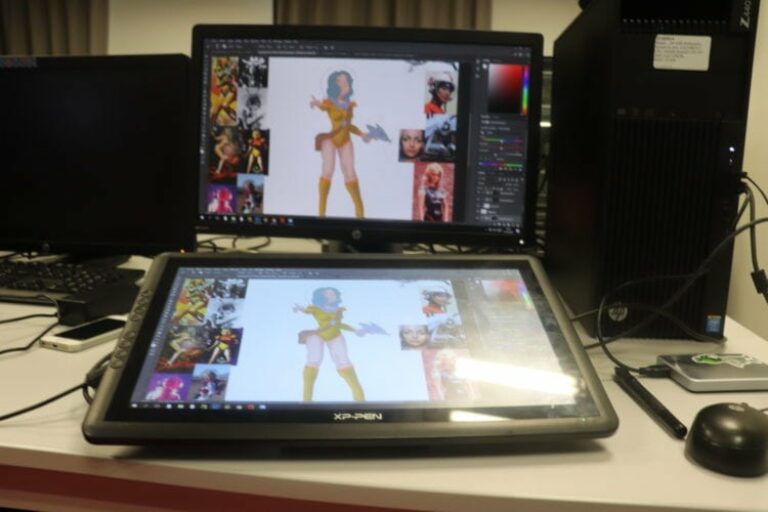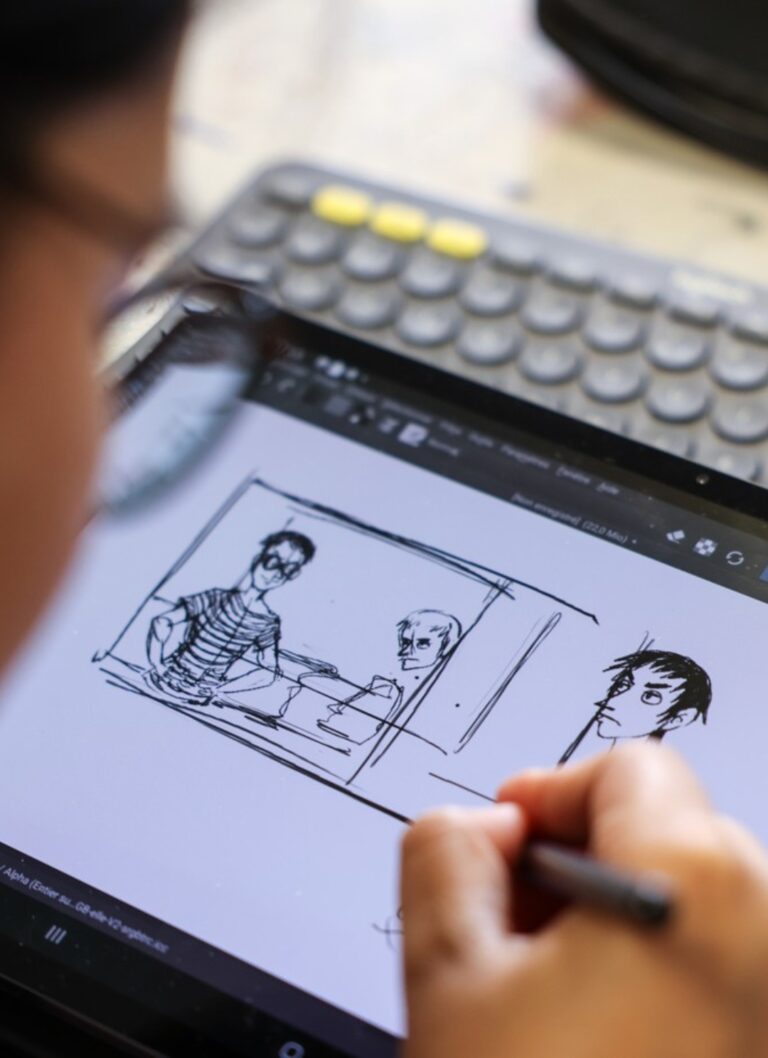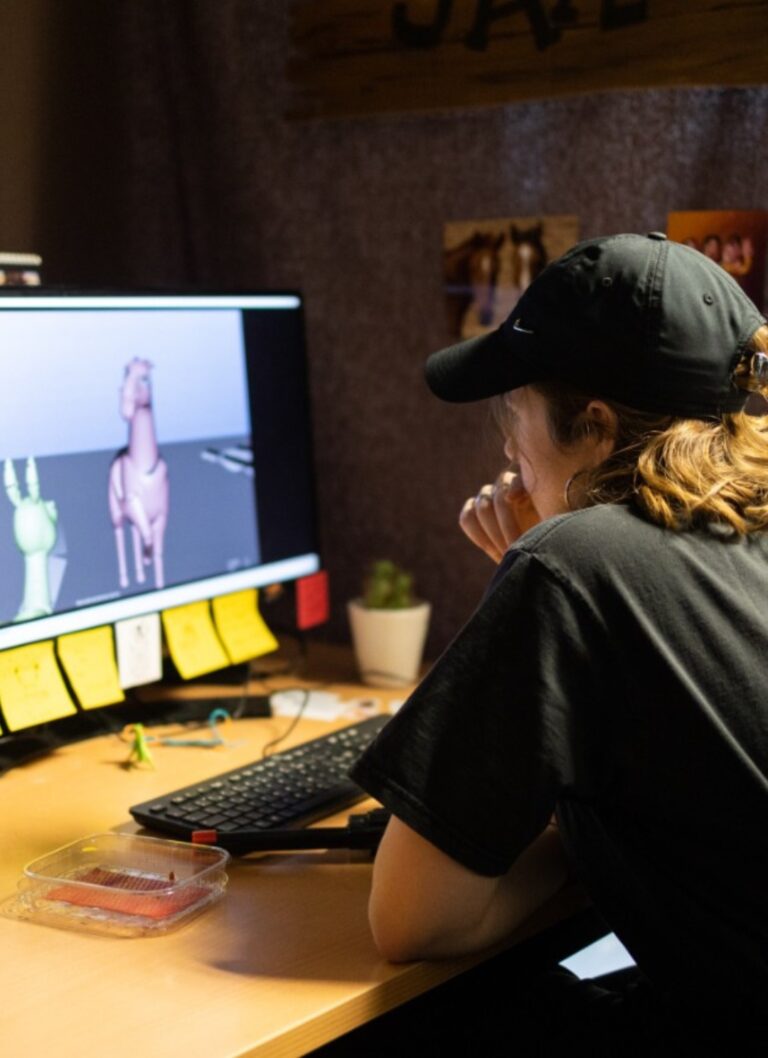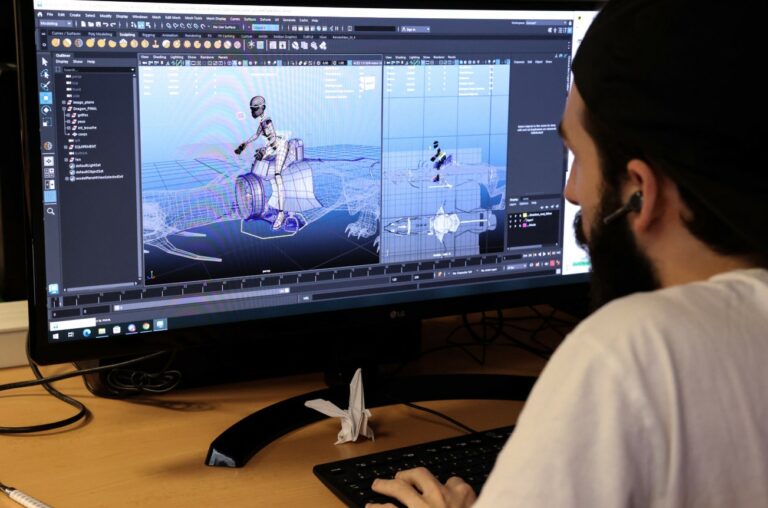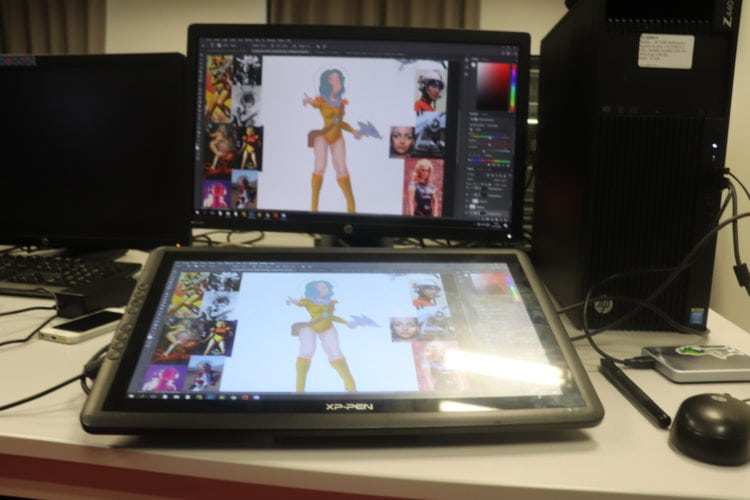
- Training 3D Animation & FX
Illustration is turning ideas into visuals from a quick sketch on paper to complex 3D digital scenes. Today, 3D illustrators use software to design characters, environments, and animations that feel alive. While the pencil still matters, new tools like Blender, Procreate, and Maya have opened creative possibilities that go far beyond .
Do you dream in sketches?
Have you ever found yourself doodling on napkins, filling sketchbooks with characters, or picturing scenes in your head? If so, illustration might be your natural path. Illustrators are visual storytellers, bringing books, video games, films, and marketing campaigns to life. But how do you turn that creative spark into a career that pays the bills? Let’s walk through it, step by step.
Let’s break it down step by step.
What does an Illustrator do?
An illustrator creates images that communicate ideas, emotions, or stories. Their work appears in publishing, advertising, entertainment, product design, and more.
Common illustration roles include:
-
Editorial illustrator: creates images for magazines, newspapers, and blogs
-
Children’s book illustrator: designs engaging artwork for young readers
-
Concept artist: develops characters, props, and environments for games and films
-
3D illustrator: produces computer-generated visuals for animation, games, and ads
-
Advertising illustrator: crafts visuals for campaigns, packaging, and branding
Daily tasks can include:
-
Researching and brainstorming ideas with clients or creative teams
-
Sketching concepts and refining them digitally
-
Using software like Adobe Illustrator, Blender, Maya, or Procreate to create final artwork
-
Preparing files for print, web, or animation
-
Revising based on feedback
How to Become an Illustrator and what do you need ?
If you’re serious about becoming an illustrator, follow these steps:
Steps to become an illustrator:
-
Master the basics – Practice drawing, perspective, color theory, and composition daily. Take art classes or follow tutorials to build core skills.
-
Learn industry tools: Get comfortable with software like Photoshop, Illustrator, Blender, Maya, or Procreate. Explore both 2D and 3D workflows.
-
Choose your path: Some illustrators study at art schools or universities, while others are self-taught. For 3D illustration, Training like ESMA’s 3d Animation & VFX programme are highly regarded.
-
Build a portfolio: Create a collection of your best and most varied work. Use platforms like ArtStation, Behance, and Instagram to showcase it.
-
Get experience: Apply for internships, entry-level jobs, or freelance gigs on sites like Upwork and Fiverr. Network through LinkedIn and industry events.
-
Keep improving: Stay updated with trends, experiment with styles, and consider specializing in areas like concept art, book illustration, or advertising.
Tips to build your Portfolio as an Illustrator
Your portfolio is your ticket into the industry. Make sure it reflects your best abilities and talents that matches the jobs you want.
- Showcase Your Best Work: (Quality) over quantity!
- Diversify Your Styles & Projects: Display a mix of personal and client based projects.
- Use Professional Platforms: Behance, ArtStation, and Instagram are great for exposure.
- Tailor Your Portfolio: If you’re applying for a game studio, show concept art. If it’s a publishing house, showcase book illustrations.
Also include short captions for each piece to explain your process or goal it helps clients understand your creative thinking.
Salary & Job Outlook for Illustrators
Illustration is growing as demand for digital content, games, and animation increases.
- Entry-Level Salary: Around $42,000 – $52,000 per year
- Mid-Career Salary: Between $58,000 – $82,000 per year
- Senior or Specialized Roles: Can exceed $100,000 per year
- Freelance Rates: Vary widely, but experienced illustrators charge $30 – $100+ per hour
- Job Growth: The demand for digital illustrators is increasing, particularly in gaming, animation, and advertising.
Freelance vs. employment:
Freelancers enjoy flexibility and can choose different projects, but income can fluctuate and not stable. In house illustrators often have stable pay, benefits, and collaborative work environments.
With experience, illustrators can move into higher-paying roles like art direction, visual development, or concept art for major entertainment studios.
Frequently Asked Questions
How long does it take to become an illustrator?
With consistent practice, beginners can reach a professional level in 3–5 years, depending on training and portfolio development.
Do I need a degree to become an illustrator?
Not necessarily. Many illustrators are self-taught, but formal education can provide networking opportunities, structured learning, and mentorship.
What skills are most important for illustrators?
Strong drawing ability, creativity, storytelling, color theory, and proficiency with digital tools are key. Communication and time management matter too.
Where can illustrators find work?
Common platforms include LinkedIn, Behance, ArtStation, and freelance sites like Upwork. Networking at industry events also helps.
Take the First Step!
Illustration isn’t just a career it’s a passion. Whether you want to design video game characters, or master 3D art, success starts with learning, practice, and repeating.
